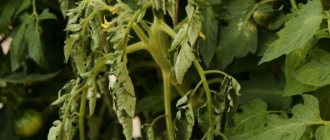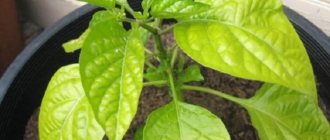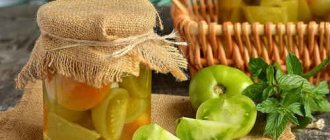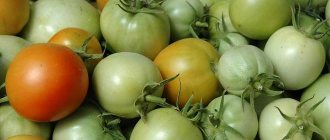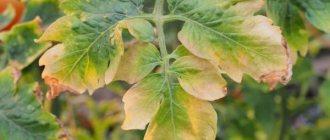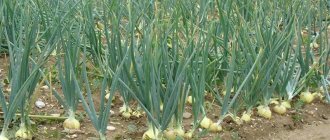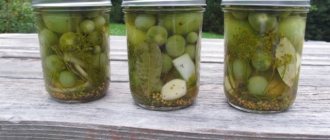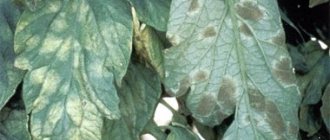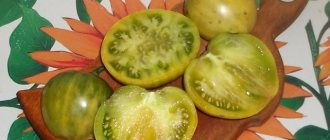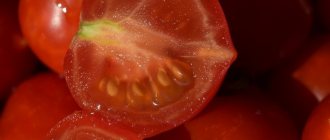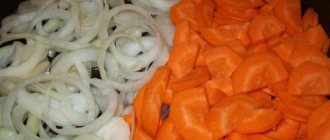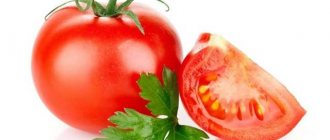Let's look at the most common causes of rot on tomato fruits and draw up an action plan to save the harvest.
Rot does not spare tomatoes in greenhouses and open ground. They can appear only on the fruits or also affect the leaves, stems and roots of plants. The main cause of rot is contaminated soil. By the beginning of autumn, it contains a lot of harmful bacteria that have been multiplying all summer. Also, tomatoes' immunity is significantly weakened due to cold weather and shorter daylight hours. Excessive humidity in a greenhouse also favors the proliferation of pathogens. The last straw in this sea of problems can be your mistakes when caring for the bushes: excess or lack of watering and fertilizing, lack of regular weeding during the season, non-compliance with crop rotation.
During harvesting, you cannot use chemicals, so use safer folk remedies and biological products.
Now let’s look at what problems cause tomatoes to rot, and what to do in specific situations.
Dark dry spots on tomato fruits are a sign of Alternaria blight.
giantsakiplants.gr
Alternaria blight, or dry spot, affects tomatoes both in the greenhouse and in the open ground. The causative agent of this fungal disease is attracted to heat, so at a temperature of 26-31°C it begins to multiply especially actively. If there has recently been heavy dew or prolonged light rainfall in your area, and the weather is hot, this could trigger the development of Alternaria blight.
The disease also spreads to the leaves and stems of the plant; they become covered with gray-brown spots. But the most dangerous thing is that the disease affects the fruits. At first, only small spots are visible on the still green tomatoes. Then they grow and can cover up to a third of the entire fruit. Moreover, the pathogen quickly spreads to whole fruits, ulcerating their smooth skin. Fungal spores are carried by wind and rain and can also be found on dirty gardening tools.
Alternaria blight is easily transmitted to potatoes, and from them to tomatoes, so it is better not to plant these crops nearby.
Affected tomatoes should not be eaten. They also cannot be stored, because rotting will continue after removal from the bush. It is not recommended to process such vegetables in any way, because... Fungal spores have already penetrated all parts of the tomato. But they must be removed from the bush so that the fungus does not infect other plants.
How to deal with Alternaria in tomatoes
Three weeks before the start of the harvest, Oxychom, Rayok or other fungicidal preparations can be used to combat the disease according to the instructions. Carry out the treatment every 7-10 days until the bushes regain their healthy appearance.
During the harvest period, using such drugs is dangerous to health. Therefore, it is better to spray the bushes with Fitosporin or Trichodermin. To prevent Alternaria from taking root in your beds, next year do not thicken the plantings and fight weeds.
- How to get rid of weeds - the secrets of “clean” beds
Weed control is the main headache of all summer residents. Let’s figure it out together how to suppress the growth of weeds effectively and easily.
Freezing
If you really don’t have enough time for cooking, overripe tomatoes can be frozen and used later.
Instructions:
- Wash the tomatoes, remove rotten areas if necessary and allow to dry.
- Then put it in a plastic bag, preferably with a zip lock, and place it in the freezer.
- Before cooking, remove the tomatoes from the freezer, defrost, remove the skin and use for their intended purpose.
Tomatoes are affected by anthracnose and have dark sunken spots.
onvegetables.com
If small and soft spots the color of the skin appear on the tomatoes, the plants are most likely affected by anthracnose. This fungal disease is dangerous because it may not be noticed immediately, but once you miss the peak of infection, only mummified black fruits will remain on the bushes. Tomatoes that are close to the soil or lying on it are at risk. It is in the soil that the fungus develops. Then it affects the roots, root collar and spreads to the fruits. Small depressed spots on them increase in size, then dark rings appear. Sometimes tomatoes crack and the rotting process accelerates.
Tomatoes in greenhouses and open ground are equally susceptible to anthracnose. Young plants suffer less than adults, although fungal spores may already live in them. The disease manifests itself mainly on ripe and overripe fruits, so remove tomatoes from the bush in time. The fungus loves a moist environment and is transferred to other plants by rain or watering. The comfortable temperature for its reproduction is 22-24°C. Sometimes anthracnose appears on tomato bushes together with Alternaria, causing a mixed infection.
The peak of anthracnose disease occurs in late summer - early autumn.
Affected fruits are not suitable for food; they are watery and tasteless. But the most annoying thing is that sometimes even a harvested and seemingly healthy crop begins to rot - which means it has already been affected by anthracnose.
How to deal with tomato anthracnose
First of all, remove the infected fruits and treat the leaves with copper oxychloride (40 g per bucket of water), Agrolekar, Chistoflor or a 1% solution of Bordeaux mixture. Remember that after this you cannot eat tomatoes for at least 3 weeks. For prevention, regularly ventilate the greenhouse and spray with a 1% solution of Bordeaux mixture, remove plant debris from the area and follow the watering schedule. Tie the lower branches to supports. During the harvest period, dig up the affected bushes and burn them.
Never put plant debris from diseased bushes into compost, otherwise the infection will continue to spread throughout the area.
Causes
The stalk of tomatoes rots quickly, and this happens for several reasons:
- too much watering;
- contaminated soil;
- lack of nutrients in the soil;
- too frequent use of fertilizers;
- seed material of poor quality;
- drying out of the soil;
- acidified soil.
Sometimes there can be several reasons at once, which only complicates the situation and provokes rotting to an even greater extent. As a result of unfavorable conditions, the fruits rot, even when green, and then fall from the branches. Rot develops on the fruits themselves.
There are several types of it:
- gray rot. It is considered one of the most dangerous species because it spreads very quickly. Infection begins with infection of the stem, then the disease spreads throughout the entire bush, from which the plant gradually dies right along with the fruits. In addition to tomatoes, gray rot is dangerous for other vegetables;
- top rot. The most common disease for tomatoes, which is manifested by the appearance of brown spots on the skin. Blossom rot can occur on both ripe and green tomatoes. Fortunately, the disease is highly treatable, especially in the early stages.
- white rot. If your crop is attacked by this disease, then it is unlikely that you will be able to save your vegetables. The crop can become infected through fertilizers and compost. Over time, spots appear on unripe vegetables, they emit an unpleasant odor and appear wet;
- brown rot. Another name for this disease is Phomasis. It occurs from improper care, for example, if you water the bushes with fresh manure too often, the tomatoes will rot near the stalk. Although the spot may seem small, the inside of the whole tomato will be rotten.
If you notice that strange spots appear on green fruits, then this is a reason to wonder whether you are doing everything right. Often such signs appear due to actively developing diseases, so you can’t wait, but need to start processing as soon as possible.
Are the tops of your tomatoes rotting? This is peak rot!
homyden.com
Tomato blossom end rot is one of the most dangerous tomato diseases, which can significantly spoil crop yield statistics. At the same time, it is not so easy to insure against it, because the disease is associated with violations of agricultural technology (improper watering, too high air temperature) and, in rare cases, genetic characteristics of plants or fungal infection. For example, a common cause of rot is overwatering after a long drought. As a result, the top of the tomato cracks a little and begins to deteriorate. Rot can also be caused by too high or low soil acidity, as well as soil with a high level of nitrogen and a lack of calcium.
Detecting rot is quite difficult. First, a small brown spot appears on the top of the tomato, which increases in size every day. Beneath it you can see that the flesh of the fruit has become unnaturally soft. Rotting can spread to a third or even half of the fruit. Of course, such tomatoes are no longer suitable for food. They wrinkle, turn black and may fall off the bush on their own before they are fully ripe. Both greenhouse and ground tomatoes suffer from the disease.
How to deal with blossom end rot of tomatoes
Remove the affected tomatoes and spray the leaves with a 0.2% calcium chloride solution. Repeat the treatment two more times during the week. Adjust watering.
For prevention, a week before planting in open ground or a greenhouse, feed the seedlings with potassium or calcium nitrate (0.5 tbsp per 10 liters of water). Place approximately 100 g of ash in a tomato planting hole and do not exceed the dose of nitrogen fertilizers during the growing season.
To save this year's tomato harvest, pick them green and leave them to ripen.
- How to speed up the ripening of green tomatoes at home
Don't know how to ripen tomatoes? Then read this article!
Signs of illness
A dark brown, in some cases almost black, spot on the bottom of unripe tomatoes indicates that the tomatoes are infected with blossom end rot. In this case, the fruit begins to turn red earlier than the others and stops the growth process. As a rule, there are no signs of disease on the tops.
The disease has characteristic signs that cannot be confused with anything else
Tomatoes decompose directly on the bushes from wet rot
growingproduce.com
Sometimes in tomato beds you can see the following picture: the fruits are ripening and are already waiting to be picked, but suddenly they become covered with transparent spots and crack. A few days later, white fungal spores appear at the crack site. The fruit softens and gives off an unpleasant odor. Soon all that remains of the tomato is the skin. At this time, the stems also soften and become dark brown. The above signs indicate a clear infection with wet, or watery, rot - a dangerous disease that is more common in ground tomatoes and during storage. Overripe fruits are at risk. But in general, the disease can manifest itself at any time during the growing season. Affected fruits cannot be saved and somehow processed into food.
Harvest your tomatoes on time. Approximately every 2-5 days, remove ripe fruits and tomatoes that have reached the size required by the characteristics of the variety.
The development of wet rot is favored by high humidity and temperatures above 30°C. But temperature changes between night and day are especially favorable for the pathogen. Among the pests that carry the disease are cabbage and onion flies, cutworm caterpillars, etc.
How to deal with wet rot on tomatoes
If wet rot appears on tomatoes at the beginning of fruiting, spray them with a 1% solution of Bordeaux mixture. This remedy cannot be used during the harvest period, but folk remedies like garlic and onions will also be ineffective, because bacteria are resistant to them. Therefore, all that remains is to remove the infected bushes, carefully sort through those tomatoes that will be stored, and in the future observe preventive measures.
To prevent infection, do not overuse nitrogen fertilizers and increase the dose of potassium fertilizers. The use of mulch film, which reduces fruit injury, has proven itself to be effective. Also, don't forget to control pests.
- Diseases and pests of tomatoes in a greenhouse: how to recognize and fight?
A detailed description of the signs of the main diseases and pests of tomatoes grown in greenhouses and greenhouses, and effective measures to combat them.
Tomato oil
To make oil, it is better to use red, fleshy, overripe fruits.
Bake washed, dried vegetables in the oven for 10 minutes, peel and remove the stem.
Salt and pepper the prepared tomatoes, add butter, chopped herbs (regan, cilantro, thyme), beat with a blender until smooth.
The finished butter is perfect for sandwiches, toast and as an addition to a main course.
Tomato oil can be stored in a cool place for a maximum of two weeks, and frozen for no more than six months.
Tomato fruits are covered with watery spots - there is gray rot on the bed
blogs.cornell.edu
Gray rot can also deprive the tomato crop. This fungal disease begins with damage to the leaves. They become covered with small dots, which then increase in size. A fluffy coating forms on the leaf, which spreads to the stems and fruits. The latter acquire a grayish tint because they are completely covered with fungal spores. Hence the name of the rot - gray. Tomatoes in a greenhouse and in open ground can get sick.
The activity of the fungus is affected by high humidity and excess nitrogen in the soil. Plants quickly become infected from each other, so it is better to remove severely affected bushes immediately.
How to deal with gray rot on tomatoes
Pointed lesions can be treated with the following composition: add 1 cup of ash and 1 tsp to 10 liters of water. copper sulfate. A 1% solution of Bordeaux mixture or Fitosporin will also help. The latter can also be used during the harvest period, like Trichodermin, Trichoderma Veride, Gliocladin. As for folk remedies, their effectiveness will be low.
As a preventive measure, always disinfect the soil before planting tomatoes using Trichodermin, Fitosporin or a solution of potassium permanganate. Choose disease-resistant varieties and follow the watering and fertilizing regime.
Late blight
Late blight or late blight is one of the most dangerous diseases of tomatoes. It can develop suddenly and spread over a few days to other plants, causing them to die. The causative agent is spores of a fungus with the same name.
Causes of late blight
- lack of proper ventilation;
- disruption of air circulation due to too frequent planting and poor planting of tomatoes;
- formation of condensation on the back side of the protective film;
- cold rains are favorable for the development of late blight;
- sharp day-night changes and insufficiently warm temperatures.
The first signs of the disease on tomatoes, as a rule, are already on the 8-10th day of infection.
Signs of late blight
Characteristic signs of the disease include characteristic rapidly growing brown-gray spots on the back of the leaf. A thin white coating is also characteristic of this same part. Over the course of a few days, the spots enlarge and merge, the leaf shrinks and flies off.
Following the green part, the fruits become infected in a similar way, turning black and falling off.
Manifestation of tomato late blight
The fruits have turned brown - late blight has attacked the tomatoes
teplica-exp.ru
In the second half of summer and early autumn, when humidity rises and the difference between day and night temperatures increases, late blight begins to reign in the beds. Many summer residents know this disease. It affects the entire bush: leaves, stems, inflorescences and fruits. At the beginning of the growing season, the disease can lead to complete loss of the crop. In addition, it spreads quickly, especially during rains and dew.
Brown spots on tomatoes grow over time, and the fruit can completely turn black and become deformed. It rots completely inside and falls off the bush at the slightest impact. Sometimes the development of late blight is inhibited by the weather itself, for example, in the heat, spots on tomatoes stop growing, and the affected areas harden.
It turns out that even if the fruits have begun to turn black (but not much!), they can still be saved. Remove unripe tomatoes and place them in hot water (50°C) for a minute. Then dry and put in a box for ripening. These tomatoes are best consumed after heat treatment.
How to deal with late blight on tomatoes
There are quite a lot of proven remedies for late blight, chemical and folk. Their effectiveness depends on the frequency of treatments, weather conditions and the condition of the affected plants. Unfortunately, it is not easy to completely get rid of the disease. It is better to regularly engage in prevention. Spraying with Consento, Revus or other fungicidal preparations every 10 days has worked well.
If infection does occur, use Kuproxat, Infinito, Hom, 1% solution of Bordeaux mixture and other copper-containing drugs. During the ripening period, Fitosporin, Alirin, Trichoderma Veride or Gamair will come to the rescue.
The following are widely used as foliar fertilizing and protection against late blight:
- boric acid – 1 tsp. for 1 liter of hot water (50°C), then add to 10 liters;
- iodine – 20 drops of iodine per 10 liters of water, mixed with 1 liter of whey or skim milk; in a greenhouse, several open jars of iodine can simply be hung in the corners.
Yeast can be used for root feeding and protection against late blight. Dissolve 100 g of fresh yeast in 1 liter of warm milk or whey. Leave for 5 hours to ferment, then increase to 10 liters and water the plants at the rate of 1 liter per bush;
Spray in open ground in dry, cloudy weather. After rain, repeat the procedure.
You can read more about late blight in the site materials.
- How to fight late blight on tomatoes in a greenhouse - what and how to treat the bushes
We tell you how to overcome late blight of tomatoes in a greenhouse and preserve the long-awaited harvest.
- Effective folk remedies for late blight on tomatoes and potatoes
The fight against late blight is not an easy task. How to protect tomatoes and potatoes from this disease?
Salad dressing
To make this creative dressing, cut very ripe tomatoes in half, press them through a sieve, and discard the skins. Salt the resulting mass, add a small amount of vinegar, mustard, chopped garlic and a little honey. Whisk everything thoroughly, gradually adding olive oil. This dressing can be added to various vegetable salads. Store it in the refrigerator. And before use, you need to warm it a little at room temperature and beat it a little again.
How to quickly process tomatoes for the winter?
The fastest way to process tomatoes is to make tomato sauce from them. It will perfectly highlight the taste of a meat dish and add a slight sweetness to it.
Tomato sauce also lasts a long time in the freezer.
Peel the tomato and grate the vegetable on a fine grater. The mushy mass is flavored with finely chopped garlic and salt. Then the tomato sauce is simmered over low heat for no more than 15 minutes. It must be stirred periodically to avoid a bitter aftertaste.
As a result, in just half an hour the hostess will have an excellent and versatile sauce. It can be used for pizza, on salads or simply spread on toast. The sauce is poured into a convenient container and frozen for the winter.
Properly processed tomatoes will provide the housewife with several useful additions to dishes, including sauce, lecho, tomato oil, etc. In this case, you can use overripe, slightly spoiled and even green fruits that would be a pity to throw away.
The benefits of processed tomatoes
It is believed that vegetables lose their beneficial qualities after heat treatment and salting. This does not apply to all vegetable crops. Tomatoes are unique in that they can be boiled, fried, salted and without fear that the concentration of nutrients in them will decrease.
Moreover, nutritionists recommend cooking them in a double boiler for those people who have certain stomach problems and are not recommended to eat vegetables raw.
Tomato paste is rich in lycopene. This element plays the role of an antioxidant, reducing the risk of mutated cells, that is, it prevents the formation of oncology. At the same time, tomatoes processed into paste are better absorbed.
Many people do not like to eat this vegetable separately from other dishes. Therefore, as a complement to meat or fish, you can eat a sufficient amount of healthy pasta. It contains a lot of moisture, so it reduces the likelihood of constipation.
